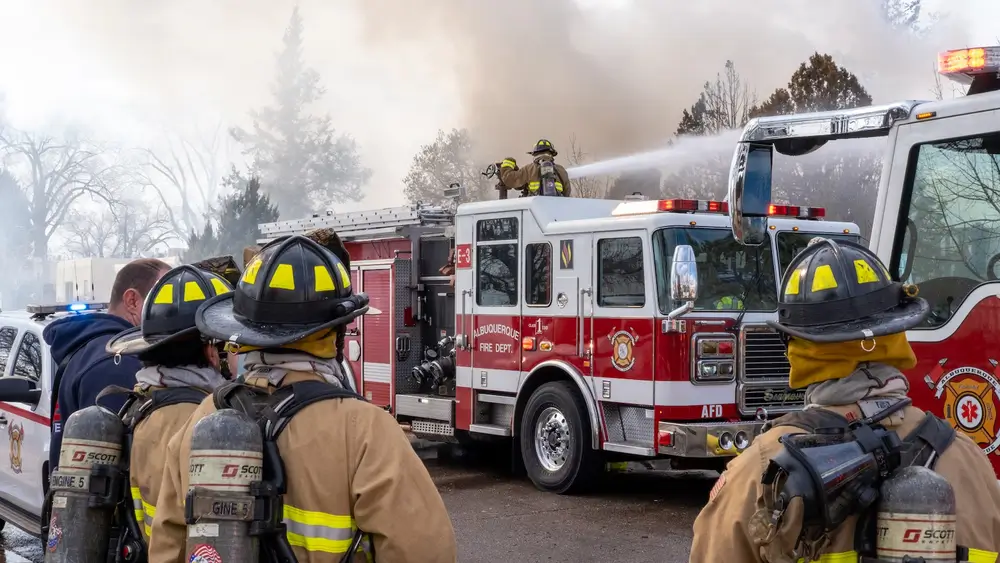Is there a profession more akin to the soldier in a home country than that of a fireman? Braving physical, chemical, and mental hazards, these heroes march on to save lives. Every time they report for duty, there’s no assurance of making it out alive from the scene.
In some cases, the unfortunate happens. Let’s take a moment to delve into the worst firefighting disasters in history – the infamous 9/11 incident, the Wildland fire in Silverton, and the Griffith Park case of Los Angeles. 340, 78, and 29 firefighters lost their lives, respectively.
When such incidents come to mind, our solemn tribute often belongs to those lost to the fire’s intense heat. But that’s only the tip of the iceberg – in this article, we will discuss three silent killers that threaten to sever firefighters’ lives.
Carbon monoxide (CO)
As per the New York State Department of Health, carbon monoxide is a silent killer because it produces no odor or color. Plus, it doesn’t cause any irritation, but it’s widely present in smoke.
Besides carbon monoxide, all fires release smoke that contains particulate matter and carbon dioxide. Though firefighters cannot essentially make out CO during fire breakouts, they can certainly feel its health repercussions.
The California Air Resources Board lists some common effects of prolonged CO exposure. These include –
- Extreme fatigue
- Unexplained headaches
- Dizziness
- Confusion or brain fog
The primary reason for such issues is the gas’ ability to bind with blood hemoglobin. As a result, oxygen supply to different parts of the body becomes limited. Studies have found that increased exposure to CO leads to frequent emergency department visits and hospital admissions among firefighters.
These issues are the most prevalent in areas plagued with wildfires. Some regions (Midwest) have exposed firemen to CO levels two to seven times higher than the National Institute for Occupational Safety and Health (NIOSH)’s recommended limits.
But can carbon monoxide (CO) poisoning cause death? Yes, the Centers for Disease Control and Prevention (CDC) published a report with moderate to severe symptoms of CO poisoning. Besides coma and seizures, severe CO poisoning can lead to cardiac arrest.
The CDC states that half of duty-related firefighter deaths occur due to sudden cardiac arrest (tracing back to CO poisoning).
AFFF Fire Fighting Foam
The second silent killer was primarily exposed when a new litigation started in 2017. AFFF, or Aqueous Film Forming Foam, is a Class B firefighting foam used for liquid fuel fires. This foam was manufactured back in the mid-1960s by the US Navy with the help of the American conglomerate 3M.
Even the US Navy was never really aware of the health hazards, let alone the firefighters. Mark Johnson, an Atlanta-based firefighter, only considered a sudden collapse or flashover as a big risk (when he became a fireman in 1980). He says that in the ‘heat’ of the moment, it’s unlikely that anybody thinks about the foam agent they’re using.
Unfortunately, the aftermath left him with Stage IV cancer, where his only option for survival was vocal cord surgery. The firefighter now has a high-pitched, raspy voice. The main danger of AFFFs comes from the chemicals they contain – per- and polyfluoroalkyl substances (PFAS).
These chemicals are considered ‘forever chemicals’ as they stay in the soil or the human body indefinitely. The US Fire Administration states that PFAS can cause health issues like testicular, kidney, thyroid, and bladder cancer. Owing to such injuries, thousands of firefighters have filed an AFFF lawsuit against the foam’s manufacturers.
Besides personal injuries, the lawsuit includes water contamination issues (with 180 Superfund sites listed by the EPA). Settlement for the latter is done, with personal injury cases taking center stage for the second half of 2023. According to TorHoerman Law, another recent study has shown a direct connection between AFFF and testicular cancer.
The personal injury cases are strengthening with such studies, and settlements may be on the horizon. There’s also been a worldwide decision to ban PFAS-containing AFFFs by the end of 2025 (even 3M will stop production).
Suicide
A study published in the Journal of Safety Research found that first responders are more likely to die from suicide than on duty. Among these first responders, 21% were firefighters, only second to law enforcement officers (58%).
Working at sites where a gruesome scene is all too common can take a toll on someone’s mental health. However, this was not the only reason. Other issues like workplace-related problems, physical health issues, and relationship problems only added fuel to the fire.
The heat stress is often as high as it is. Work problems like long shifts, fatigue, and non-cooperative colleagues (violence) aggravate it and push the fireman over the edge. What’s worse is that the numbers could be higher because the CDC believes that cases of suicide are often underreported.
Stress is a part of any job, but there should not be any stigma surrounding mental health problems. Many fire departments are using the help of peer-to-peer counseling and post-event decompression sessions. Efforts are still underway to reduce suicide cases among first responders.
Closing Thoughts
Did you know that firefighting is the most dangerous profession of all? Nearly 60,750 firefighting injuries occurred in the line of duty in 2021. These heroes constantly put their lives at risk to ensure others are safe and protected.
It’s time their life, health, and concerns are given a top priority. Autonomous Breathing Equipment (ABE) must be used to prevent CO poisoning in woodland wildfires. Firefighters must be allowed ample rest and offered free checkups to address any health dangers at the earliest.
Hopefully, the 2025 ban on all PFAS-containing AFFFs should be the end of deadly cancers among firefighters. New non-toxic fluorine-free firefighting foams are emerging. Still in their nascent stages, these foams’ efficacy and safety depend on whether they stand the test of time.


























